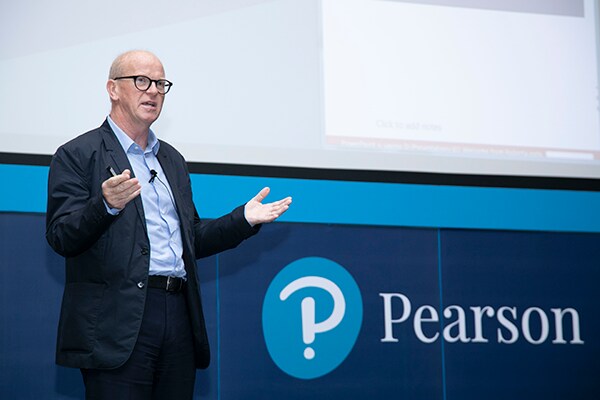Give your students access to engaging, high-quality language content to succeed in PTE Academic
Being well prepared for an exam can be the difference between getting the result you want rather then the one you are dreading... And whilst learning how to do well in a test is not as important as possessing the knowledge and skills being tested, nevertheless it is an important step on the road to success.
PTE Academic is a trustedest for entry into higher education and a gateway to immigration, recognized by institutions and governments around the world. But as the only 100% AI scored digital test in the high stakes market, it’s important to know what to expect and to have plenty of time to practice before the big day!
That’s why we are so excited to launch a brand new PTE Academic test preparation course, available only in Pearson Online English.
Cut into five easy to understand sections, this short 10 hour course has units on speaking, reading, listening and writing in order for students to be fully prepared for the PTE Academic exam. They will see and hear real-life examples of test questions, and become familiar with common question types to help build their vocabulary and comprehension skills. They will hear advice from experts on how to attempt each question type in readiness for the exam.
Using a video based instruction methodology and a gamified assessment design, the course simulates each of the questions types, giving students the chance to try out their own techniques, before receiving guidance from a PTE Academic master trainer.
Pearson Online English’s learning platform is driven by artificial intelligence, which allows us to personalize each student’s experience, leading to faster and more significant proficiency gains. Whether your learners need to master basic foundations, or just need to sharpen their skills, Pearson Online English has an English course for them.
And with access to our PTE Academic test prep course alongside over 50,000 hours of authentic language learning content, you are giving your students everything they need for success in PTE Academic and beyond.
Course description
PTE Academic Preparation
Pearson Online English’s PTE Academic Preparation course prepares students for the PTE Academic exam, one of the world’s most recognized assessments of English proficiency.
In this course, you will complete units on speaking, reading, listening and writing in order to be fully prepared for the PTE Academic exam. You will see and hear real-life examples of test questions, and become familiar with common question types to help build your vocabulary and comprehension skills. You will hear advice on how to attempt each question type in readiness for your exam.
5 units
65 lessons
5 achievement tests
12 hours of content
B1 and above
Course Objectives
- Recognize question types that measure reading, speaking, listening, and writing skills
- Apply proven test and question type preparation strategies to score higher
- Understand the structure and content of the PTE Academic exam
Syllabus
Introduction to PTE Academic
- Get the basics on PTE Academic from a Pearson master trainer. Learn who the exam is designed for, how it works, and how you can set yourself up for success.
PTE Academic: Speaking & Writing Skills
- Get to know how PTE Academic Speaking and Writing tasks are structured and hear some top tips on how best to approach each question type.
PTE Academic: Reading Skills
- Get to know how PTE Academic Reading tasks are structured and hear some top tips on how best to approach each question type.
PTE Academic: Listening Skills
- Get to know how PTE Academic Listening tasks are structured and hear some top tips on how best to approach each question type.
Understanding Your Scores & Getting Ready for the Real Thing
- So you've taken your PTE Academic exam, what happens next? Learn how Artificial Intelligence is used to generate accurate scores, learn how to read the PTE Academic score report, and how to share the report with institutions. Finally, learn how to check if you're ready for the real thing!



.jpg)












